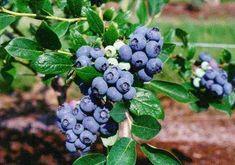
The Polish berry sector is counting the cost of one of its coldest winters on record, with exporters expecting that production of the country’s blueberry crop in particular will be limited once again this year.
For an industry facing falling demand as well as a tumbling temperature gauge, the net impact on returns may end up being broadly positive in terms of market pricing. However, given the country’s major investment in blueberry production over the past few years, the adverse conditions will most likely have a chilling effect on the expansion plans of its major exporters, many of whom are working hard to find new commercial outlets in northern Europe and the Baltic region.
“It is impossible to estimate the volume of damage now,” says Bohdan Marcinkowski, owner of exporter Blueamber, which manages around 100ha of blueberry production in northwest Poland. “We think that young plants and earliest varieties will be most affected. This year’s cold winter did damage in virtually all farms in Poland. In the north west there was less frost than in other parts of the country, but we had a warm and wet autumn, which weakened the plants’ resistance to big drops in temperature. Among the varieties we have on our farms, Duke and Sunrise have the best post-winter performance while Ozark Blue and Draper have suffered the most.”
Jan Karwowski, co-founder of producer-exporter Polberry, based in Warsaw, agrees that it will take some time to assess fully the impact of Poland’s harsh winter. “Many plantations might experience difficulty due to severe winter this year,” he confirms. “The decrease in temperature came about very drastically, reaching as low as -30ºC.”
Dominik Wozniak, managing director of export company Rajpol, does not expect a reduced crop forecast to cause too much concern. “The last two years have been very good in terms of prices, mainly because of a smaller crop in Poland. This winter was short and very cold, but it is too early to speak about damages. Probably there will be some, but they will not be big. We should expect at least the same crop - or even a little bit bigger - than last year.”
Of greater concern to Polish blueberry exporters in particular is the overall impact of the economic downturn, which has affected much of Europe, but Karwowski thinks the market is still set to continue its recent growth.
So where will new demand materialise? Nordic and Russian markets in particular appear to be increasingly on the radar of a number of Poland’s berry exporters, who have traditionally focused their attention on western European markets such as the UK.
On the varietal front producers are speaking in warm terms about the Draper variety.
“This year the Draper variety is entering production on our plantation, which is still young and developing, so we will have more and more volume every year,” says Joanna Sapala, who runs Baltic Berry with founder Waldemar Sapala “We currently have 34ha devoted to production and we are also talking to other plantations about possible co-operation.”
Draper, a mid-season blueberry which crops a few days before mid-season variety Bluecrop, has strong upright growth and is highly productive, according to UK-based Hargreaves Plants, which holds the European licences for both.
Though relatively new to Poland, producers are optimistic about the opportunities they bring. -



